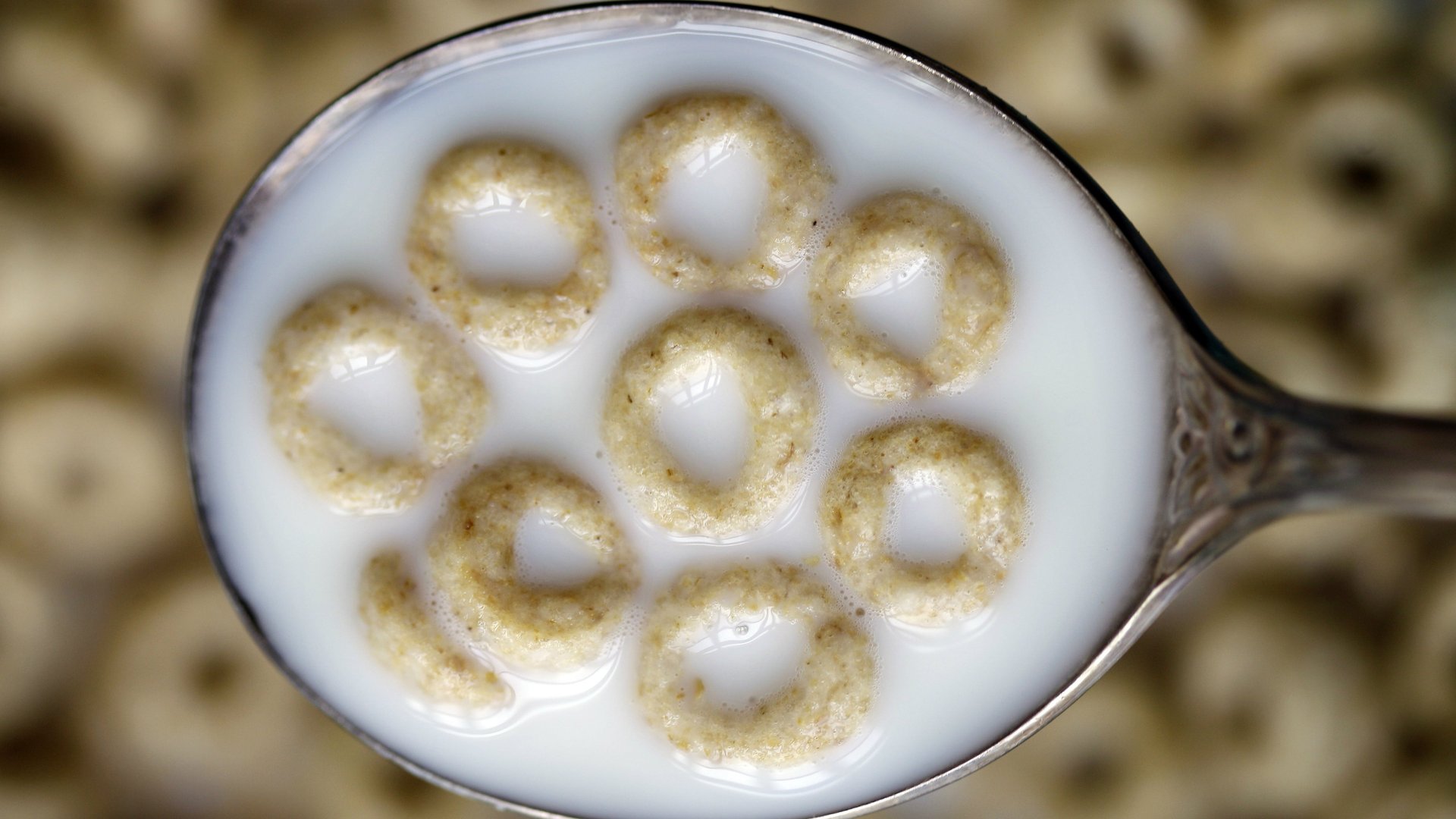An iconic US breakfast cereal changed its recipe, and Americans have started eating it again
Turns out, plain old Cheerios still have some kick in them.


Turns out, plain old Cheerios still have some kick in them.
More Americans are buying Cheerios, after a decision by General Mills to guarantee the cereal would be gluten-free. With a switch-up in manufacturing (the company now sifts its oats) and sourcing, Cheerios ended General Mills’ fourth quarter in June with notable sales improvement. The brand is narrowly beating most of the rest of General Mills’ cereals and breakfast cereals overall in sales growth, according to data from Euromonitor.
That’s welcome news for the company, which watched Cheerios sales tumble 8% during the 2015 fiscal year. During a June 29 call with investors, General Mills CEO Ken Powell said the cereal brand experienced a 5% uptick in retail sales in the second-half of its 2016 fiscal year.
It’s a glimmer of hope for a category of breakfast foods that have been battered in recent years. US consumers increasingly abandon traditional breakfast cereals for more portable, snackable breakfasts such as yogurt and morning drinks.
A June 30 analyst report by RBC Capital Markets noted General Mills would likely continue to struggle with cereal sales, but that its effort to remove artificial flavors and ingredients from its array of brands would help cushion the trend, if not alter it.
Reformulating product recipes don’t always work out for the best (even Cheerios have had a rocky time), as evidenced by the consumer response to Pepsico’s removal of aspartame from Diet Pepsi. But for now it seems to be working well for cereal.
“We will continue our renovation efforts by converting two more Cheerios varieties to gluten-free and by removing artificial colors and flavors from five additional cereals,” Powell said, adding that the company would introduce gluten-free Cheerios to the Canadian market in 2017.
Overall, net sales for General Mills’ fiscal year 2016 decreased 6% to $16.6 billion compared to the prior year. One bright spot, perhaps, is that while the company is still making less than rival Kellogg’s on US cereal sales, the gap is closing.